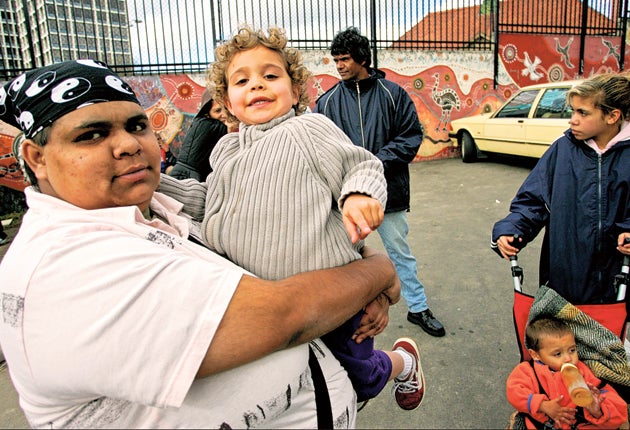Anger at plans for shop on Aborigine burial site

In 1965 a group of Sydney University students, led by a young Aboriginal activist, Charles Perkins, toured New South Wales by bus to highlight racial discrimination in country towns. One of the stops on their "Freedom Ride" was Moree, where blacks were barred from the public swimming baths.
After demonstrations organised by the students, and clashes with locals, the ban was lifted, in what is regarded as one of Australia's most notable civil rights victories. Half a century on, though, Aboriginal leaders say Moree is regressing to the dark days. Their land claim over a burial ground has been rejected – only for approval to be given for a Woolworths supermarket to be built on the site.
Just one week separated the two decisions, both of which were made by Tony Kelly, the New South Wales Lands Minister. He dismissed the claim to the burial site, over which a sporting oval was established in 1892, on the grounds that it was used for public recreation. He then gave the go-ahead to Woolworths, Australia's largest supermarket chain, to build a Big W discount store.
At the reserve, Taylor's Oval, two bodies wrapped in possum skin and bark were exhumed in 1903. Aboriginal townsfolk say up to 29 more people – listed in the council's Births, Marriages and Deaths records, but without identified graves – could be buried there.
The oval has a proud sporting history: the likes of Sir Donald Bradman and the rugby league great Clive Churchill played there over the years, and it was home to a legendary Aboriginal rugby league team, the Boomerangs. As a result, it is viewed as a place of racial reconciliation in once segregated Moree. It has additional significance because in 1982 a promising young indigenous footballer, Ronald McIntosh, was shot dead in an adjacent street, in a racist attack.
Mr Kelly's decision – which follows five years of wrangling over plans by Moree Plains Shire Council to sell the land to Woolworths for $2.25m (£1.28m) – was described by Lyall Munro, an Aboriginal leader, as "a total disgrace" yesterday. "This is an Aboriginal burial site and also a unique sporting ground, and one of the best reconcilation sites in our history," he said.
Mr Munro said there was plenty of land outside the town centre for Woolworths to build on, but the company was intent on buying the oval, because it was next to an existing supermarket. "This will split Moree clean in two," he predicted. "It will divide the Aboriginal and European communities, I've got no doubt about that."
In fact, both communities are already split about the merits of the development, with some locals saying it will generate much needed jobs in the town.
Despite ministerial approval, the supermarket cannot go ahead until the Aboriginal land claim has been resolved. The New South Wales Aboriginal Land Council plans to appeal against rejection of the claim. Its chief executive, Geoff Scott, accused the state government of "wedging sections of the community against each other".
Mr Scott added: "It's a matter for the media and the public what they make of the fact Minister Tony Kelly rejected an Aboriginal land claim one minute, and then approved the sale of the same land to Woolworths the next."
Mr Kelly defended his decisions. His spokesman said that land claims were assessed on the basis of the use of the land at the time of application, while "any subsequent decision on the use of the land is unconnected to any previous land claim".
The first battle of Moree
For Australia, one of the symbols of the Aboriginal civil rights movement was the local swimming baths of the farming town of Moree. This was where a group of students, inspired by Martin Luther King, first encountered violence in their campaign to highlight discrimination against non-whites. Their charismatic leader, Charles Perkins, and other activists tried to escort a group of six Aboriginal children to the baths, which was barred to non-whites. They were met by a hostile crowd of 500 people, including the town mayor, who manhandled several students away from the pool entrance. Other students were spat on by the crowd. When the group still refused to leave, the pool's manager announced that the pool would have to close immediately for repairs to its pumps. The students pointed out that they could still hear the pumps operating from outside the building. The incident attracted national media attention, and soon afterwards the pool was desegregated.
Subscribe to Independent Premium to bookmark this article
Want to bookmark your favourite articles and stories to read or reference later? Start your Independent Premium subscription today.

Join our commenting forum
Join thought-provoking conversations, follow other Independent readers and see their replies